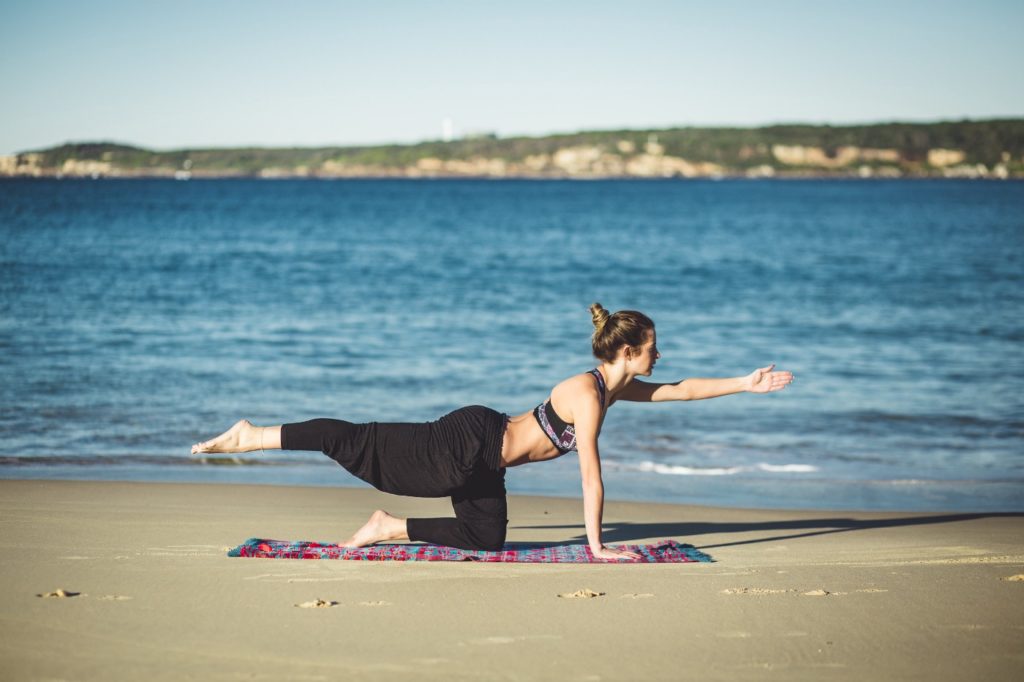How to Make Self-Care a Top Priority

There are a number of things that don’t make sense to me. Like calculus, the appeal of mayonnaise-based products and why the never-ending budget deficit seems to be expanding like a black hole in outer space. A real head scratcher, though, is why some people believe focusing on self-care is selfish, especially during tumultuous times. But there is nothing inconsiderate about prioritizing your well-being.
Taking care of yourself better enables you to look out for others, overcome obstacles and bring more goodness into your life. If you would like to make self-care a priority, read on for four ways to get started.
“We all want to deliver good work, take care of our family and be the best mother, father, son, daughter we can be,” said Global Executive Leadership Coach Brenda Bence, author of The Forgotten Choice: Shift Your Inner Mindset, Shape Your Outer World. “But if your cup is empty, you’ll have nothing left to pour into other people’s cups. So, you need to really pause and replenish, fill up your own cup so that you can offer more to others.”
“When you take care of yourself, whether through exercise, getting enough sleep, taking breaks and vacations, or mind rest, all of that shifts your energy into being in the present,” continued Bence. “You’re not worrying about the past or dramatizing about the future. Being fully in your present helps you get unstuck and unlock your full potential because that is when we’re most alive and capable of creating and thinking clearly.”
Healthy Coping Mechanism
Making self-care a top priority helped Suzanne Case deal with one of the world’s most stringent pandemic lockdowns. The global sports marketing expert moved to Sri Lanka on February 26, 2020 with a dream to start a surfing and fitness retreat. Living in Asia for years, the British ex-pat knew the island paradise was the perfect place to incorporate her love of the sea, outdoors, fitness and surf into a business. She found a place to live, started looking at land and properties and relocated to Sri Lanka with the goal of making it her permanent home. Then two weeks later, the first local community-based case of COVID-19 was reported.
Within another week, all international airports, schools and parks were closed, work from home orders declared and island-wide curfews started to take effect to limit infections. But the intensive lock-down meant that no one was allowed to leave their homes for food, exercise or any reason at all for three to seven days at a time. Even when the curfew was lifted, it was usually for between four to 15-hour intervals.
“I moved to Sri Lanka to start a new way of life, to regain an equilibrium, to pursue a dream and to make my quality of life better,” said Case. “A month after I arrived, I find myself in a strange country, knowing few people and in total lockdown in a guesthouse thrown together with two virtual strangers — not knowing if I can stay in the country, where my next paycheck is coming from and whether I can actually fulfil the reason I moved here.”
Facing massive isolation and uncertainty about her career plans and tourist visa, Case felt stuck. In order to cope, she focused intently on her well-being.
Previously, Case went to the gym daily for weight-based training and only felt satisfied with intense workouts that left her exhausted. Switching to online instructors, classes that helped her relax and other fitness tools, Case took more time to focus on areas she had been neglecting, like mobility and stretching. On non-lockdown days when allowed to leave her home, she would also take walks, swim in the sea or relax outside.
Self-care also involved strengthening connections with key people. Case would have daily check-ins with a good friend in the U.K. who was also starting her own business, have several video calls each week with her father and brother and get on-going support from a virtual fitness community of like-minded souls. Case learned a lot about herself during the lockdown. She removed self-imposed guilt about not being in constant motion and became more open about sharing her emotions. Case has continued her more balanced approach to exercise and well-being to this day.
“Pre-COVID-19, I rarely gave myself the time and space to slow down and look at the importance of self-care,” explained Case. “Most of the time I operated at break-neck speed, feeling unsuccessful unless I was constantly doing something. But being constantly busy is exhausting, it doesn’t always produce the best outcome and doesn’t allow me to always take care of myself. Now I know self-care is vital to helping me actually achieve my dreams.”
Here are four ways to make self-care a top priority:
1. Give yourself permission.
Science has proven that getting enough sleep, exercise and eating healthier is essential to maintaining a strong immune system. Even with heightened fears of contracting COVID-19, standard Influenza or whatever communicable germs might be lurking around the corner, some people do not give themselves permission to prioritize well-being. facts alone often are not enough to get people motivated to take better care of themselves. So be clear about your motivation. If you want to be there fully for yourself, family members, friends, your job or the overall community, practicing self-care fuels up your energetic gas tank.
2. Make the time.
A little self-care can go a long way. Just 20 minutes of exercise a day or a five-minute meditation can reset your mental and physical wellness. An advocate of regular mental rest breaks, Bence said that even one minute per hour can make a difference in your well-being. “I ask the executives I work with to take one minute, 60 seconds every hour, to sit back, relax, calm your mind, bring down your shoulders and breathe deeply,” she explained. “If you do that one minute for every waking hour, then you’ll get about 16 minutes or so a day of mental rest. That is just one example of how you can easily find time for taking care of yourself.”
3. Start small.
Committing to more well-being does not mean you have to immediately become a triathlete or attend immersive yoga retreats. Taking small steps can help you in many ways.
A few years ago, Melissa Bloom was slammed with a trifecta of hard knocks at once. Her divorce took an ugly turn about a year into the process, right around the time Bloom’s job was eliminated at work. Then her beloved father, a lawyer who had been helping her through the divorce process, was diagnosed with a glioblastoma brain tumor. Three weeks later, he passed away. With her divorce finalized and temporarily in-between jobs, Bloom was able to be in Florida with her parents during her dad’s final weeks. It didn’t stop the loss from hitting her incredibly hard.
“The rug was literally pulled out of almost every part of my life; I was devastated and didn’t have any footing,” she says. Without her normal work routine to lean on, Bloom’s impetus for getting out of bed each day was taking care of her kids. “I was sort of free-falling and had to reduce it down to the lowest denominator.”
The answer turned out to be slowing down to grow grass on her lawn that summer, which had been resistant to flourishing in the past. She researched the process online of how to grow grass from seed, consulted a local home and garden store and purchased the necessary supplies. Taking a break to focus on something that elemental proved to be healing for Bloom. She gained a deeper connection with her authentic self. Her thought processes changed. She prioritized well-being and reevaluated friendships. Bloom let herself be still and go with her gut.
4. Find Your Rhythm.
Building a habit is based on constant repetition. Identify the self-care practice you would like to adopt and then determine the best ways to seamlessly fit that into your day. Want to increase your daily movement? Maybe you have walking meetings with co-workers or catch up with friends while exercising virtually together instead of another Zoom Happy Hour.
How have you made self-care a top priority?
